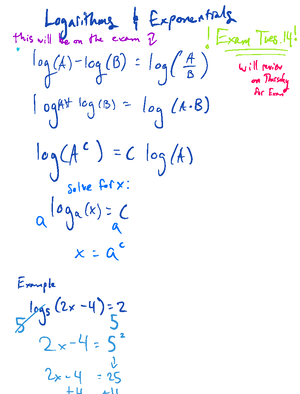- Information
- AI Chat
Was this document helpful?
WEEK 9-HW - Chapter 12-13
Course: Pre-Calculus (MAT-261)
39 Documents
Students shared 39 documents in this course
University: Grand Canyon University
Was this document helpful?

Chapter 12:
Mitosis: For each statement, decide if the event occurs in:
(A)Interphase (B) Prophase (C) Metaphase (D) Anaphase (E) Telophase
(B) 1. Chromosomes first become visible as sister chromatids
(D) 2. Sister chromatids separate into individual chromosomes
(B) 3. Mitotic spindle begins to migrate toward opposite poles of the cell
(E) 4. Nuclear envelope begins to reform
(C) 5. Sister chromatids line up in the middle of the cell
(A) 6. DNA replicates
(A) 7. Cell spends to most time in this phase
(B) 8. Microtubules are connected to the kinetochore of the sister chromatids
(A) 9. Includes a growth phase
(B) 10. Division of 2 identical daughter cells
(C) 11. Centrosomes are at opposite poles of the cell
A, F, E, D, B, C
12. A shallow groove in the cell known as a(n) cleavage furrow indicates that cytokinesis has
begun.
13. A drug is known to inhibit the formation of the cell plate during cytokinesis. Would this drug
affect human cells? Briefly explain your answer. (CRITICAL THINKING)
No, because human cells do not have a cell plate.





